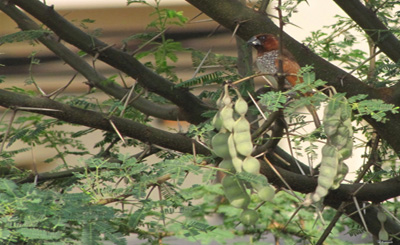Vachellia nilotica

Babhul
Vachellia nilotica is a tree 5–20 m high with a dense spheric crown, stems and branches usually dark to black coloured, fissured bark, grey-pinkish slash, exuding a reddish low quality gum. The tree has thin, straight, light, grey spines in axillary pairs, usually in 3 to 12 pairs, 5 to 7.5 cm (3 in) long in young trees, mature trees commonly without thorns. The leaves are bipinnate, with 3–6 pairs of pinnulae and 10–30 pairs of leaflets each, tomentose, rachis with a gland at the bottom of the last pair of pinnulae. Flowers in globulous heads 1.2–1.5 cm in diameter of a bright golden-yellow color, set up either axillary or whorly on peduncles 2–3 cm long located at the end of the branches. Pods are strongly constricted, hairy, white-grey, thick and softly tomentose. Its seeds number approximately 8000/kg.
Detailed Description:
Vachellia nilotica (widely known by the taxonomic synonym Acacia nilotica, or the common names gum arabic tree, Babul/Kikar,Egyptian thorn, Sant tree, Al-sant or prickly acacia; called thorn mimosa or prickly acacia in Australia; lekkerruikpeul orscented thorn in South Africa; karuvela maram in South India) is a species of Vachellia native to Africa, the Middle East and the Indian subcontinent. It is also currently an invasive species of significant concern in Australia.
This tree was originally the type species of the genus Acacia, which derives its name from ακακία (akakia), the name given by early Greek botanist-physician Pedanius Dioscorides (ca. 40–90) to this tree as a medicinal, in his book Materia Medica. The renaming of the genus to Vachellia remains controversial. This name derives from the Greek word for its characteristic thorns, ακις (akis, thorn). The species name nilotica was given by Linnaeus from this tree's best-known range along the Nile River. The plant V. nilotica then, in turn, became the type species for the Linnaean Acacia genus (not all of which have thorns, even though they are named for them). For the ongoing reclassification of this and other species historically classified under genus Acacia, see the Acacia.
General Uses: